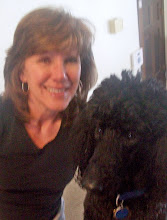The Three Little Pigs
Components which may affect comprehension:
- Just what is a pig?;
- Living on a farm vs. the city, the suburbs, a village, etc.;
- The concept of a fable/fairy tale (i.e. animals that talk?);
- Complex English sentence structure.
Corduroy
Components which may affect comprehension:
- Just what is a toy store?;
- Teddy bears which come alive and walk around??;
- Mattresses used to sleep on;
- Once again, complex English sentence structure.
Scaffolding Understanding
First of all, supporting ELL's from Uganda in their understanding of the above texts would entail explaining a variety of components from both stories. For example, What is a pig?, What is a toy store?, and You sleep on mattresses? Just what is a mattress? Not one of the three girls I sponsor has ever been in a toy store or slept on a mattress. Just what is a fairy tale/fable, anyway? Moreover, they all live in villages and are not familiar with the term "farm." Consequently, I would introduce new vocabulary from each story to my ELL's along with a picture of the same to help students better retain information. I would do this together with a picture walk of the corresponding book prior to reading. Also, I would develop, along with the students, a word wall poster (Hill, p. 21) for the main characters, items, etc., for future reference in relationship to each text. Afterwards, I would then scaffold students by encouraging their reading attempts and assisting them in tapping out words during reading, as well as helping them with their word selection during responses after reading. Making text-to-self connections would be another technique I would employ. Most importantly, however, I would model for ELL's just what good reader's do to enhance their language development by reading the story aloud for them myself while they follow along (i.e. look at the pictures to help decode text, tap out words, read ahead to help figure out an unfamiliar word's meaning, etc.). Lastly, for my writing extension activity, I would have each student create his/her own simple sentence version of each separate text to be published for future rereadings and practice. This would include drawing, coloring, writing of simple sentences to summarize the important aspects of the story, as well as a title page, author (self), etc. These self published books would then be used to reread at the beginning of guided reading groups, during free time, SSI, etc. Children love to read their own work!
I'm sure I've left something out as it's tough to think of everything I would do in a vacuum. Please let me know if you have any suggestions. I look forward to hearing your thoughts.

Melinda,
ReplyDeleteI like how you organized your blog. The bullet points made it easy for me to follow and understand the information.
There were several directions my brain took while reading your scaffolding strategies:
1) Beds! I’ve never really thought about beds in different cultures, but they differ so drastically. I think students would enjoy studying different beds and sleeping arrangements from around the world. The information about beds online was surprisingly limited. The best I could find was the brief synopsis below. If students were into the idea, it could be a class research and book writing project.
Sleeping Customs in Various Cultures: http://library.thinkquest.org/25553/english/well/hygiene/beds.shtml#culture
2) Class books! Having previously taught middle school, I saw this idea modeled for the first time this fall in a kindergarten class. I was amazed at how engaged the students were in their peers’ writing. I think it is a great idea for scaffolding. I had not thought about class books in this context before your blog. I looked up how other teachers use class books and came across a slew of promotions for educational materials, but the blog posted below provided me with quick ideas. I particularly liked the idea of having enough books at the end of the year for each child to take home one as a keepsake.
Class books Blog: http://www.proteacher.org/c/1005_Class_Books.html#
3) Folk/fairy tales! We love sharing traditional stories from our cultures in our class. They help students connect to each other, provides great opportunity for comparing and contrasting, open discussion on the nature of oral tradition and how stories shift over time, and drives home the idea that literature is a record of the human experience. While your girls from Uganda may be unfamiliar with American fairy tales, they are sure to have oral traditions in their own culture they would enjoy sharing and can connect to those you introduce in class.
Thanks for the ideas!
-Rebekah
Thank you, Rebekah. I like your thoughts regarding comparing/contrasting oral traditions. I appreciate your input.
ReplyDeleteMelinda
Melinda,
ReplyDeleteI loved reading your blog imagining working with three girls from Uganda who have never been to a toy store. Your blog reminded me that we can never clump all of our ELL students in one category. ELL students are infinitely diverse. You might have some ELL students who come from big cities and are very familiar with mainstream American culture and others who know very little. This is the same with all students. They all come with such different background knowledge, which is why ELL strategies are good strategies for teaching all students.